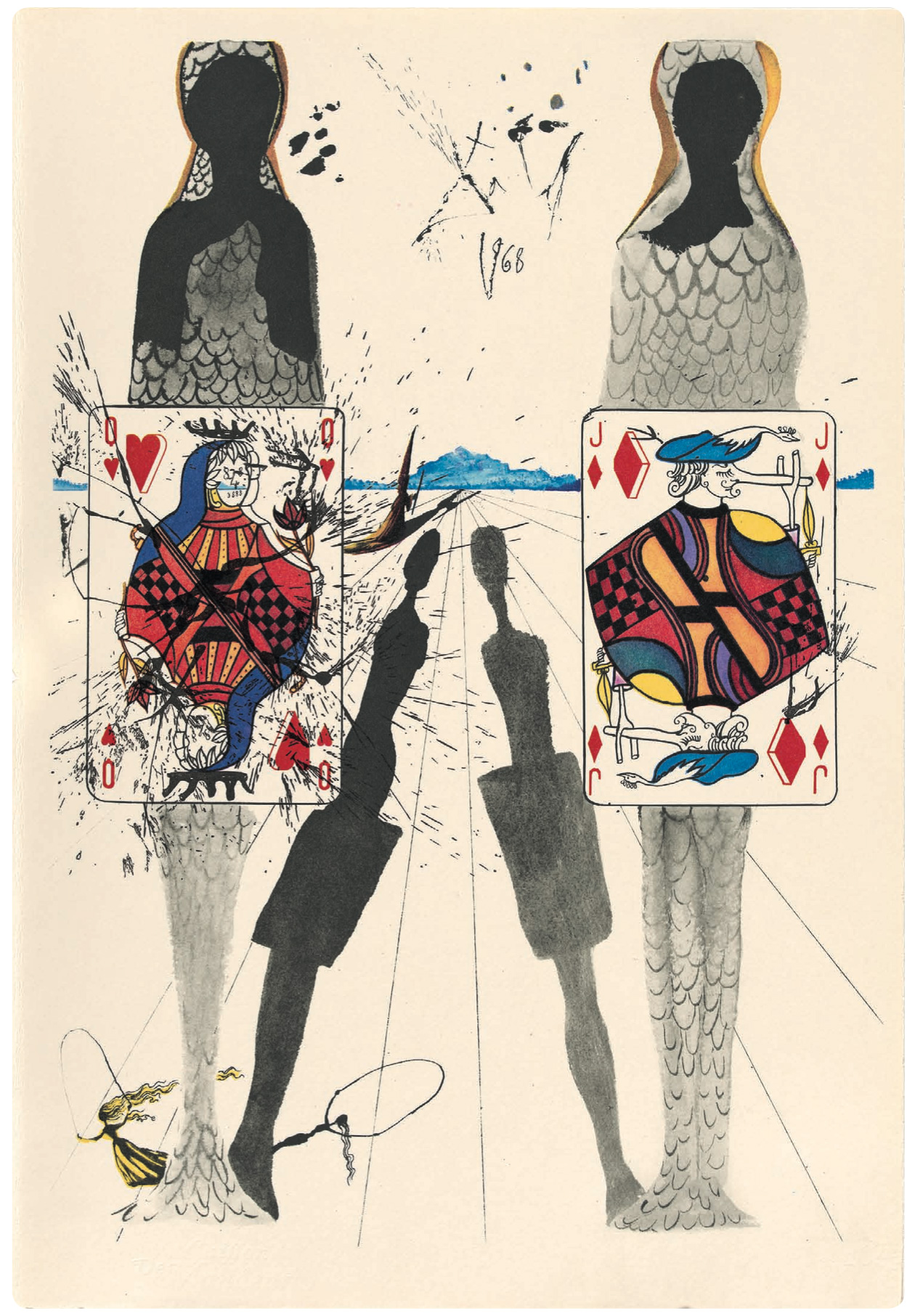Salvador Dali's Rare 1969 Illustrations for "Alice's Adventures in Wonderland," [View all]
Two masters of the fanciful and philosophical, together.
For more than half a century, this unusual yet organic cross-pollination of genius remained an almost mythic artifact, reserved for collectors and scholars. To mark the 150th anniversary of the beloved book, Princeton University Press brought back to life the
Dalí-illustrated Alice’s Adventures in Wonderland (public library) — a crowning achievement among
the greatest illustrations of the Carroll masterpiece from the century and a half since its inception, featuring new introductions by Mark Burstein, president of the
Lewis Carroll Society of North America, and mathematician Thomas Banchoff, who knew and collaborated with Dalí.
The Rabbit Sends in a Little Bill

The pool of tears.

The caucus race and a long tale

The Mad Tea Party

In the introduction, Burstein considers the natural creative confluence between Carroll and the surrealists:
For both Carroll and the surrealists, what some call madness could be perceived by others as wisdom. Even the creative processes of Carroll and the surrealists were similar. The surrealists practiced automatism in their writing and drawing; Carroll called the initial telling of the tale … “effortless,” saying that “every such idea and nearly every word of the dialogue, came of itself… when fancies unsought came crowding thick upon [me], or at times when the jaded Muse was goaded into action more because she had to say something than that she had something to say.”
In addition, collages were a serious apparatus in the surrealists’ arsenal; Carroll invented the term portmanteau — combining words — and produced “Jabberwocky,” the most famous example of pure neologistic nonsense in the English language (or close to it, anyway). His bestiary of mome raths, toves, and Bread-and-butter-flies, also from Through the Looking-Glass, could easily have been products of the surrealists’ game of Exquisite Corpse.
Dalí himself applied a number of surrealist techniques to his interpretation of the story. To represent Alice — the sole character who appears in every chapter — he reused an image of a girl skipping rope that he had first painted more than thirty years earlier. He placed this strange, static, mid-motion figure, almost an icon, in each of the twelve illustration — a choice that was part automatism, part cut-up technique, as if echoing Carroll’s incantation from the first page: “The rest next time — ” “It is next time!”



